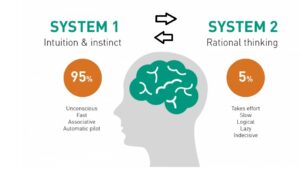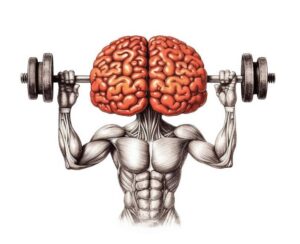Many a times we think of difficult emotions such as nervousness, anxiety, anger etc. as negatives and try to get rid of them. We fight a losing battle since these emotions are a part of us and it is not possible to get rid of them. Instead if we change our perspective, accept these emotions and think of them as sources of energy which we can even utilize in a positive way, we could alter our relationship with them from that of an adversary to a collaborative partner.
I still remember my first stage performance at the age of 6 when I had to recite a poem in the school assembly. I was nervous and someone advised me to not look into people’s eyes instead look at the wall at the back while I perform. While I recited staring at the wall people started turning back to see what I was looking at. Made me more nervous and I finished the poem like a train and ran off the stage. Think at this point I sub-consciously decided that stage makes me uncomfortable and I don’t want to do it again. After that many opportunities to participate in debates, elocution came and I passed all of them not wanting to make myself uncomfortable. I visualized myself participating but never had the courage to actually do it. As I entered college I mustered the courage to restart public speaking and became better but there was always an ongoing internal battle against nervousness. I did not enjoy the experience!
As I started my running journey I realized that especially during long runs (after 30 odd kms) there was a similar internal battle with the pain and tiredness. I could stop at any time and just go home. But I didn’t. I finished the runs in spite of the discomfort and each time I enjoyed the experience by the end. One difference I found was that I had more time to evaluate the discomfort I was feeling and could think about how I could work with it or focus back on the run rather than the thought of stopping.
While on stage there was lesser time to observe myself internally and therefore my instincts were taking over. But slowly as a learning from running I changed this. I started to observe what was happening in my body when I was anxious on stage. Once in an uncomfortable situation, as anxiety arose in the mind I usually tried to get rid of it. Trying to get rid of anxiety and not succeeding made me more anxious. And then my focus was completely shifting from content of what I was to present to why I am nervous and is that visible to people looking at me.
With the above realization and regular practice slowly but surely, I learnt to accept that anxiety is an important human emotion. You can’t get rid of it, instead you need to accept, acknowledge it and learn to work with it. Once I started accepting it as a part of me, my relationship with anxiety changed. I still feel it when I am in uncomfortable situations but now I have stopped trying to get rid of it. I see it arise, accept it which then allows me to focus back on the actions I need to take. Anxiety becomes a partner not an adversary. Now when I present, I use the initial nervousness to be more present and be more mindful of my words. The feelings are still present as they are a part of me but I am able to channel them in the right direction.
There are a few learnings I wish to share based on my journey:
- Self Awareness: I think most fears and biases within us were ingrained during childhood, our growing years. I believe it is possible to reverse these fears and biases even during adulthood. Key to this reversal is self-awareness, deliberate/regular practice to bring the change and above all patience.
- Role as a parent: It is important for kids to be exposed to different activities at an early age and some of them might make them uncomfortable. It can be sports for some, public speaking for others. This is where the role of the parent comes in. Telling the child that it is okay to try different things, fail at some, get up and try again. This is part of the learning process.
- Communicating with the child: Instead of letting the child hide their fears under the carpet we should help the child open up about their feelings/emotions and in the process help them overcome their fears. The process will most probably be uncomfortable for the kid and parents and will require patience but in my opinion, this will help our kids become more confident and self-assured adults.
- Learnings can always be applied from one area of your life to another. For me the learnings came from running. You just need to self-introspect on a regular basis to identify such opportunities.




